Glitch lecture, March 2013
This talk was originally put together and delivered for Jenny Vogel's video class at the University of North Texas on March 4, 2013. Minor edits and updates have been made since then, but it is largely a time capsule of my view of glitch art at that time. The genre of glitch art has exploded in the years since I organized this page, and these changes are not reflected below.
CONTENTS
DEFINING GLITCH ART
Glitch art is in many ways a decentralized, active movement that evades definition. I talk about glitch art in the way that I view it, not the way it should be universally defined (further explanations of my views can be found in the essay Kyle Evans and I wrote for the Leonardo Music Journal). In my view, glitch art is/can be:
→An examination of the materiality of analog and digital video
→A practice of undermining interfaces and breaking through the computational instincts of consumer devices to liberate their latent audio and visual materiality
→An infliction of errors and chance operations upon and/or enabling improvisational aesthetic explorations into processes that are ordinarily mechanical and automated
→An act of interrupting, disrupting, and subverting the relationship of the user to consumer technological devices
My definitions and views of glitch art purposefully focus on critial methodology rather than specific aesthetic output or technical process.
EXAMPLES OF GLITCHING
ANALOG GLITCHING
Interrupting/breaking/rewiring/hacking/cracking a continuous signal.
An analog signal is any continuous signal. It differs from a digital signal, in which a continuous quantity is represented by a discrete function which can only take on one of a finite number of values.
→FEEDBACK
Making devices behave erratically by sending outputs back to inputs. This includes optical feedback (feedback achieved by pointing a camera toward a monitor displaying its output) and no-input mixing feedback (feedback with no input) using an audio or video mixer patched to send its output directly to its input.
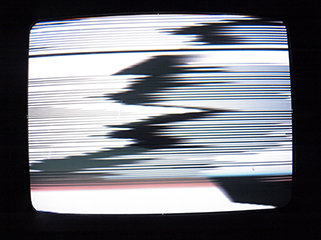
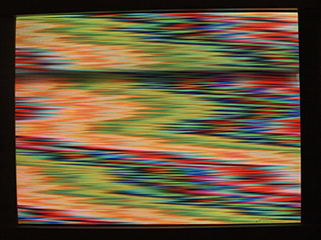
↑ (left) television feedback and (right) no-input audio feedback bent into video through a hacked VGA cable via crackedraytube.com
→CIRCUIT BENDING
Re-wiring found electronics to generate alternative aesthetic outputs utilizing devices' existing components/reconstructing "black boxed" internal hardware of electronics to make the devices function in a new way.
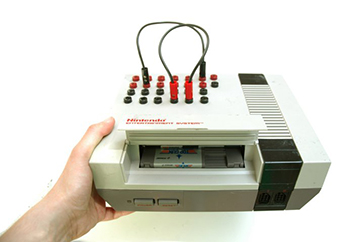
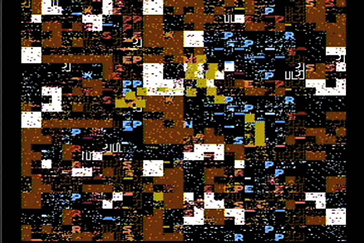
↑ Notendo (Jeff Donaldson), a circuit bent Nintendo used for live performance
→ELECTROMAGNETIC BENDING/WOBBULATING
Bending an image in a cathode ray tube with an electromagnet, as in the Pail/Abe Synthesizer (also known as the Wobbulator) built by Nam June Paik and Shuya Abe.
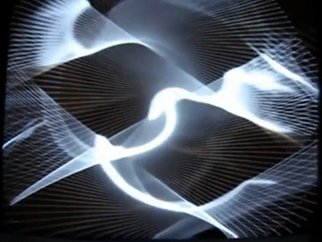
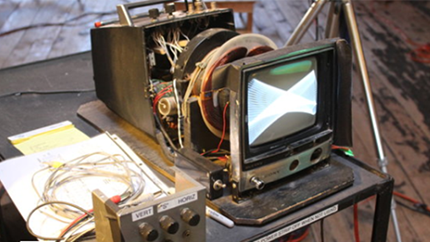
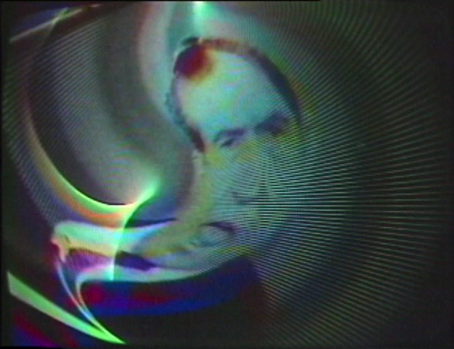
↑Richard Nixon filtered through two low frequency sine waves generating an "S" wave in the Paik/Abe Synthesizer
DIGITAL GLITCHING
Corrupting digital information at a code or compression-based level.
A digital signal is a physical signal that is a representation of a sequence of discrete values (a quantified discrete-time signal), for example of an arbitrary bit stream, or of a digitized (sampled and analog-to-digital converted) analog signal.
→DATABENDING
"The artistic misuse of digital information" -Stallio (Benjamin Berg)
Databending exploits the universal language of digital media to interpret digital files in improper formats and then edit them in those formats, generating glitched results when interpretted properly again. This is often referred to as reinterpretation, and includes opening audio files in a text editor, video files in Photoshop, or image files in Audacity, for example.
An example of using TextEdit to glitch as still image:
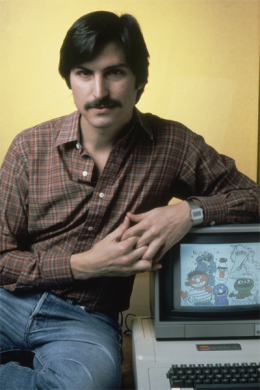
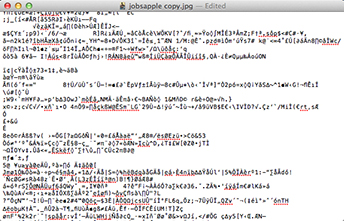
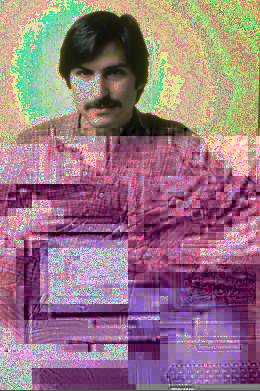
↑Steve Jobs posing with an Apple II in 1981, bent into text and edited, then re-saved as an image.
USEFUL RESOURCES FOR DATABENDING
1. Databending and Glitch Art Primer via Stallio (Benjamin Berg)
Databending in wordpad and photoshop. Note that these methods can be applies to still image files, video files, and audio files, so it's a great place to start.
2. Databending Using Audacity via Antonio Roberts
Bending still image or video files into audio and applying audio effects to glitch them using the free audio software Audacity.
3. Glitching With a Hex Editor via Evan Meaney
A tutorial on how to open any digital file in a hex editor to glitch it at a code level, incorporating Evan Meaney's glitch theory and practice.
DATAMOSHING
Exploiting video compression to create visual distortion of movement.
I learned to datamosh using Bob Weisz AKA Datamosher's How to Datamosh youtube video tutorials.
HOW DIGITAL VIDEO COMPRESSION WORKS
Compressed digital video is made of different types of frames:
→I-frames (also known as intra-coded frames, or key frams): frames that contain all visual information of a video's image. They are coded as self-contained images without reference to any other frame, unlike P and B-frames, and are analogous to an image on a film strip or an animation frame.
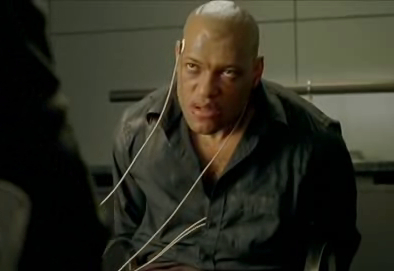
↑an I-Frame containing all visual information
→P-frames (also known as predicted frames): frames that contain information on the movement of pixels from the previous I-frame, allowing a video to be compressed with less key frames and therefore take up less space. P-frames can reference previous I-frames.
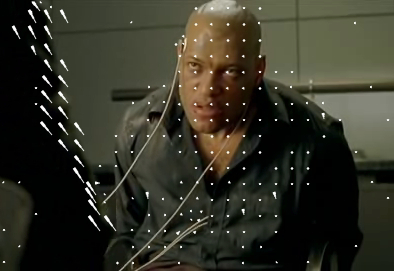
↑a P-frame, containing movement information
→B-frames (also known as bi-directional predicted frames) are essentially a combination of I and P-frames, and can contain both image data and motion vector displacements, or combinations of the two.
Datamoshing is enabled by deleting I-frames so that the movement of P and B-frames apply to the incorrect image and pixel data.
EXPLOITING VIDEO COMPRESSION TO DATAMOSH VIDEOS
Deleting I-Frames
→When you delete I-frames from a video, the visual information from the previous sequence will be displayed and moved around following the motions in subsequent P-Frames.
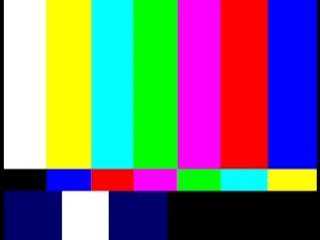
↑Horses running with I-frames and P-frames.

↑Horses running with I-frames deleted, meaning image data from the previous frame is moved with the P-frame's movement.
Copying and pasting P-Frames
Using AVIDemux, P-frames can be copied and pasted to create very glitchy visualizations of movements detached from their I-frame image (see How To Datamosh video tutorials below).
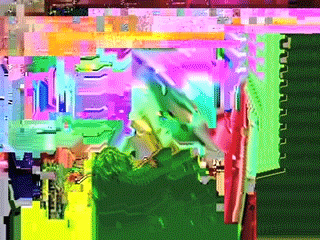
Corrupting a Video with ffmpeg to drag the playhead over P-frames using quicktime or VLC
→When processing a video in ffmpeg following the presets in the one-stop datamoshing kit, open it in quicktime or VLC before it's finished. The video will be corrupted enough to glitch in realtime by dragging the playhead back and forth.
USEFUL TOOLS FOR DATAMOSHING:
1. How to Datamosh YouTube video tutorials by Bob Weisz AKA Datamosher (at the bottom of this page)
3. GoldMosh, software created by Sam Goldstein to make datamoshing an intuitive process
4. Snapz Pro or any other screengrabbing software (datamoshed videos are unstable and need to be re-captured)
A short video made using the techniques described above:
GLITCH HISTORIES AND PREHISTORIES (a selection)
→John Cage
Glitch art is in many ways rooted in the neo-dada movement of the 1950s and 60s that John Cage initiated (the first true historical precedent of glitch art would probably be Marcel Duchamp). Cage was a pioneer of chance operations and indeterminacy in music, which directly relates to [circuit/data]bending and moshing for aesthetic outputs (deleting characters of an image when bent into a word file is, in most cases, a random process).
Cage was one of the first artists to modify audio instruments for experimental artistic purposes, such as his modified piano series of works.
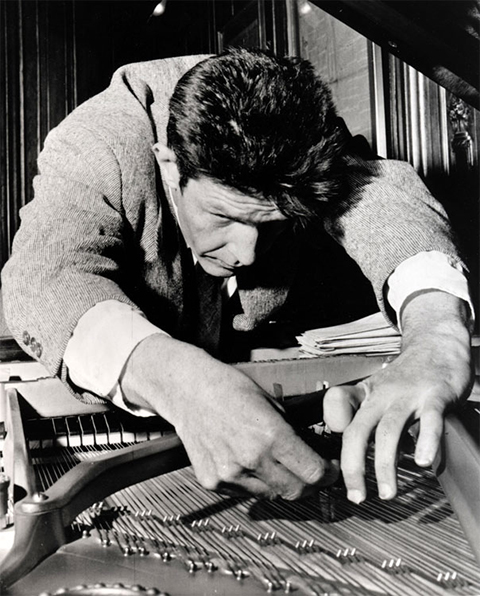
John Cage obstructing the functionality of a piano for his Prepared Piano works which began in 1938.
→Nam June Paik
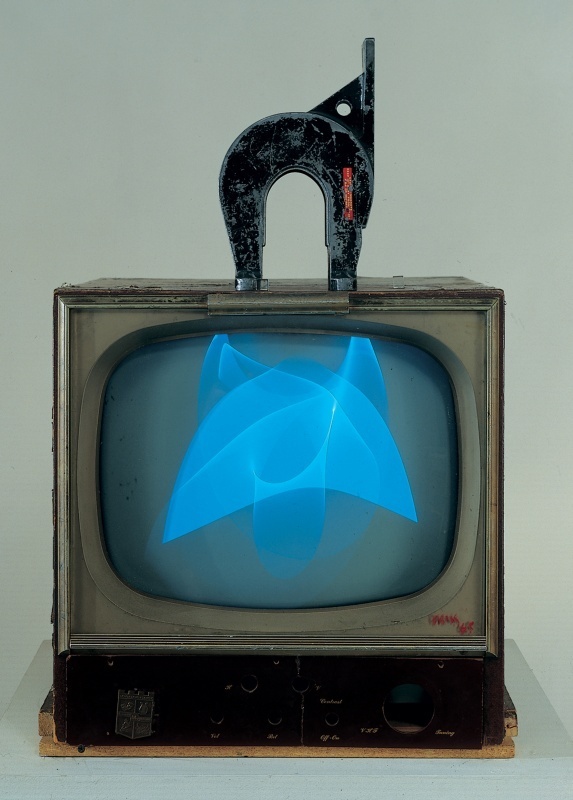
Magnet TV, 1964-1965, Modified black-and-white television set and magnet, Whitney Museum of American Art
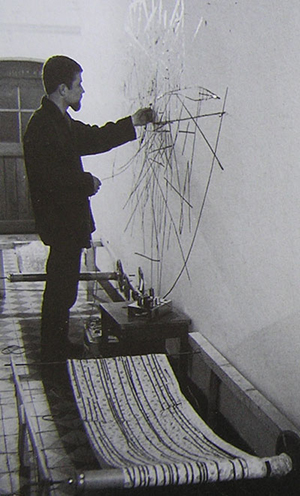
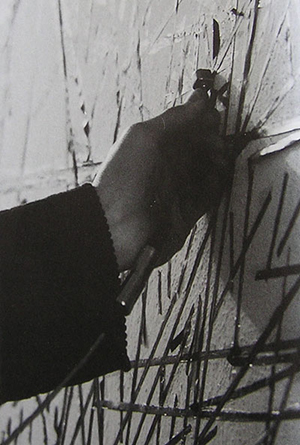
Random Access, 1963, Strips of audiotape, open-reel audio deck, extended playback head, and speakers, Solomon R. Guggenheim Museum, New York
→Dan Sandin, Phil Morton, The Sandin Image Processor, and Distribution Religion
→Dan Sandin has taught at the University of Illinois at Chicago (UIC) since the 1970s. During this time Dan Sandin created the Sandin Image Processor, an early video synthesizer.
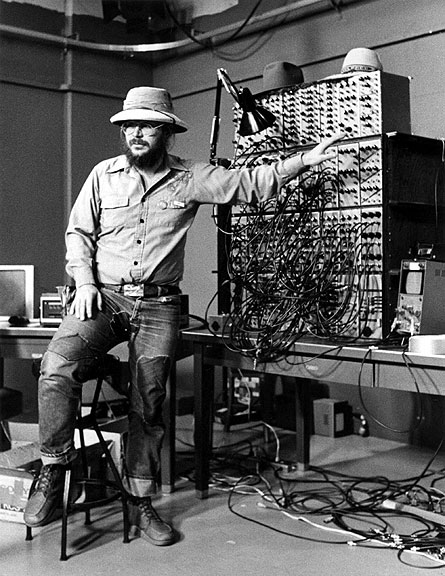
Dan Sandin with the Sandin Image Processor.
Phil Morton taught in the video department (which founded, the first in the country of its kind) at the School of the Art Institute of Chicago in the 1970s.
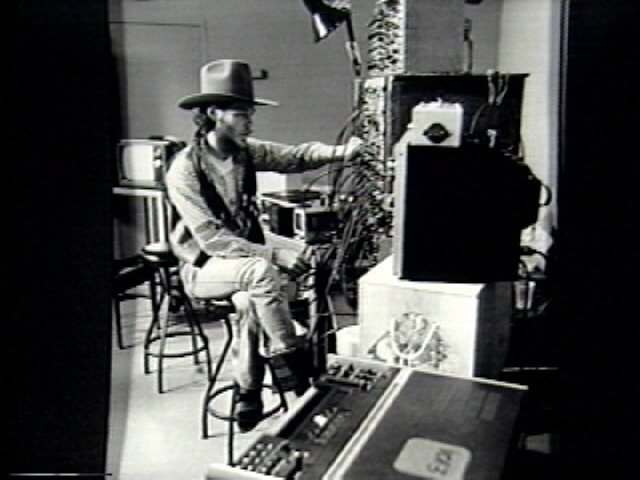
Phil Morton with the Sandin Image Processor.
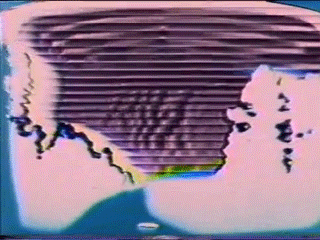
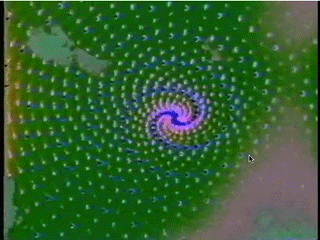
Morton and Sandin created released plans for the Sandin Image processor under the COPY-IT-RIGHT license in a document called Distribution Religion, anticipating open-source software and the glitch art/new media movement:
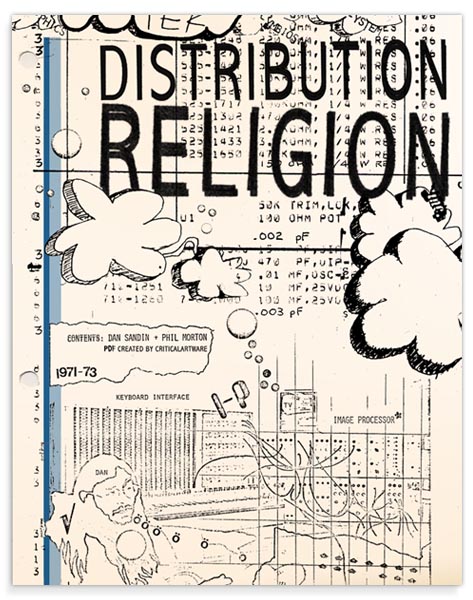
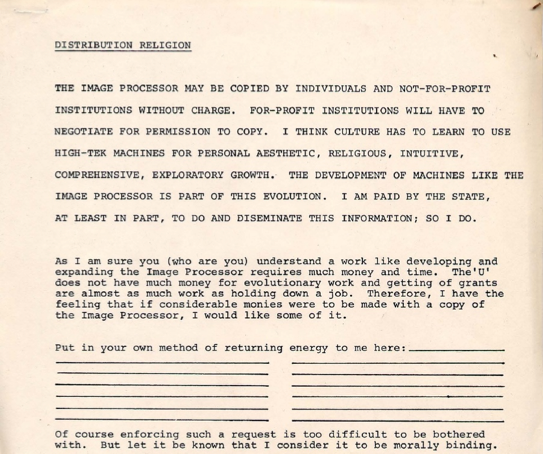
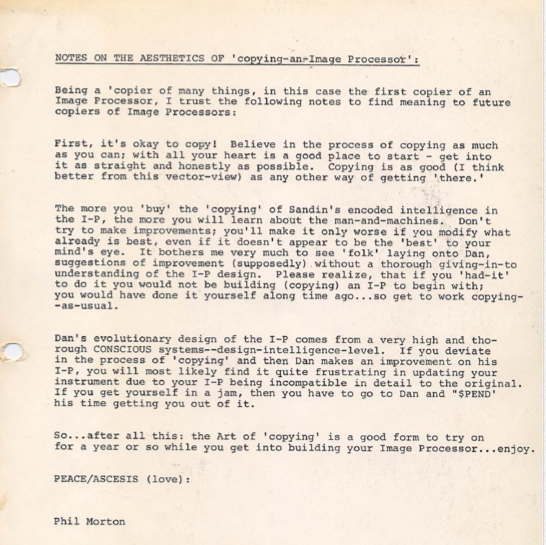
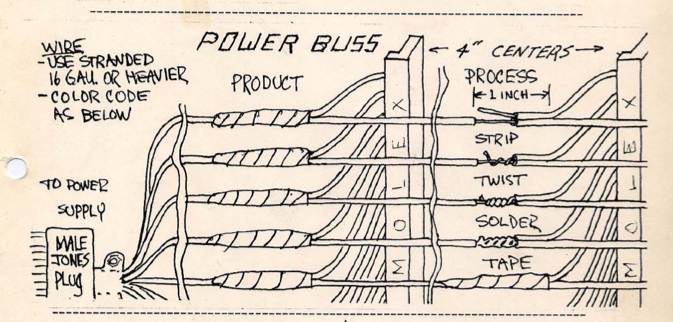
Denton, TX-based LZX Industries recently put out a Sandin Image Processor module.
→jumping ahead to the 1990s...
GLITCH HISTORIES
→jodi.org
Joan Heemskerk and Dirk Paesmans
Started making web-based and software-based glitch artworks in the mid-1990s.
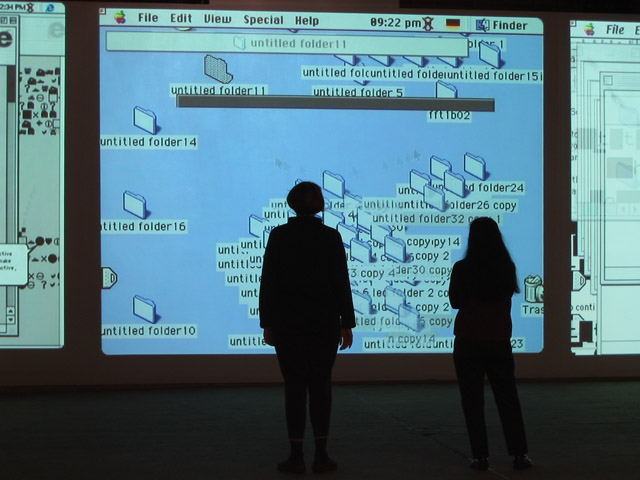
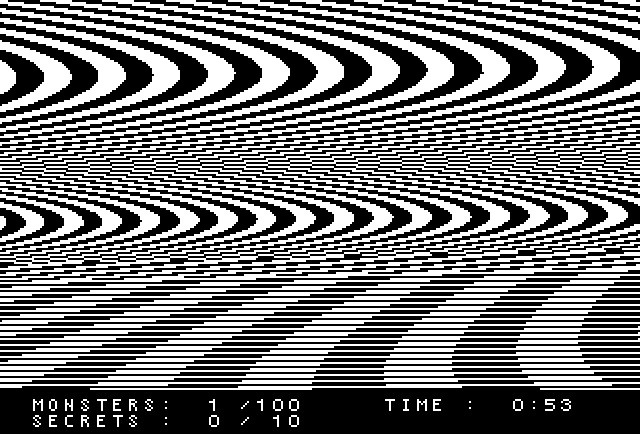
Untitled Game (1996), interactive modifications of Quake
→Cory Arcangel
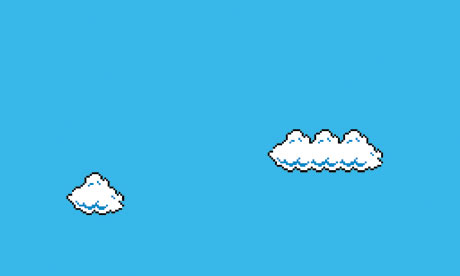
→Super Mario Clouds, 2002, Handmade hacked Super Mario Brothers cartridge and Nintendo NES video game system, Whitney Museum of American Art, New York
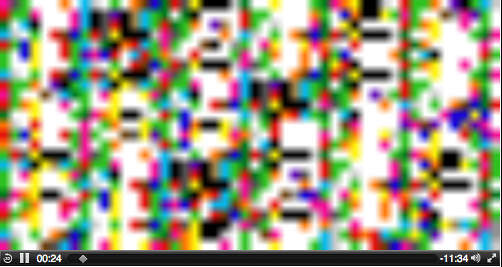
→Data Diaries, 2002
Arcangel tricked quicktime into thinking his computer's memory was a video. The memory from his computer was bent into audio and video once a day for an entire year.
→The entire month can be viewed here.
→Takeshi Murata
One of the pioneers of datamoshing.
Monster Movie, 2005
→Rosa Menkman
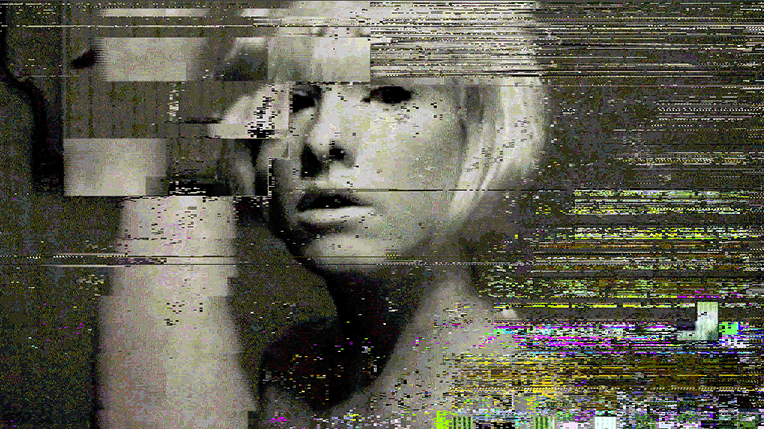
Experienced the work of JODI and started making glitch work in 2005
Organized several web-based glitch communities
Wrote A Vernacular of File Formats, 2010
Was a co-organizer of the GLI.TC/H Festival.
→The Chicago School of Glitch
→Jon Cates
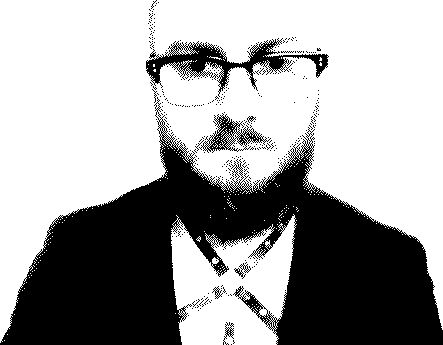
Artist/writer/curator/teacher/theorist, started the New Media department at SAIC and coined the term "Chicago Dirty New Media."
Runs the Phil Morton Memorial Research Archive.
Wrote/is writing a continually updated piece on glitch art and Chicago Dirty New Media: GL1TCH.US
→Jon Satrom
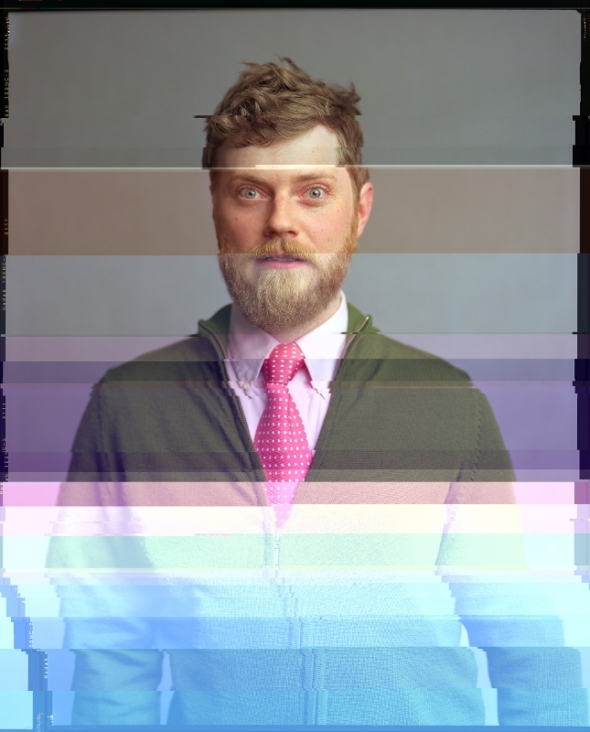
Working with Ben Syverson, Jon Satrom developed theSatromizer, an interactive glitching iphone app that allows you to intuitively glitch still images. It's available in the app store.
They also turned the satromizer into an operating system for the iPad, the Satromizer OS:
→Nick Briz
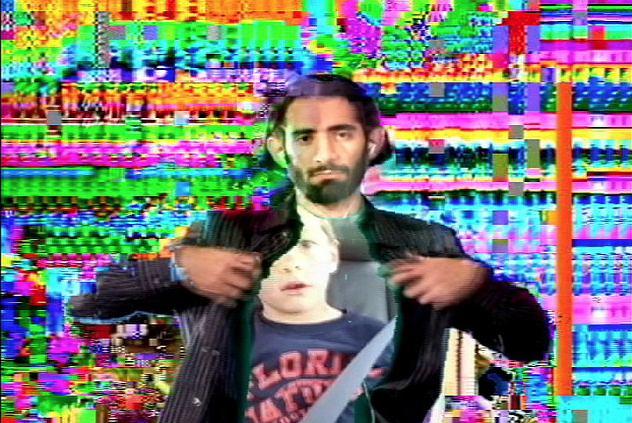
→The GLI.TC/H Festival
http://gli.tc/h
A noise & new-media event/conference/symposium/festival/gathering in Chicago.
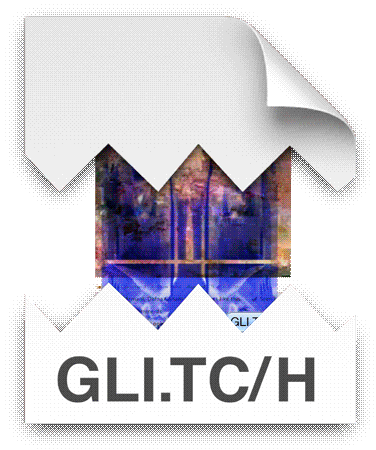
→glitChicago at the Ukrainian Institute of Modern Art
http://glitchicago.paulhertz.net
"glitChicago presents the work of 22 artists working with glitch in a wide variety of media. All have participated in the city’s glitch art scene, though they may come from other cities and indeed other countries. The two-month long exhibition features wall installations by Melissa Barron, jonCates, A. Bill Miller, Jon Satrom, Lisa Slodki, and Paul Hertz and free-standing installations by Alfredo Salazar-Caro, Curt Cloninger, James Connolly and Kyle Evans, and Channel TWo."
My Own Work
ANALOG
VGA Audio/Video Synthesizer, 2011-2014
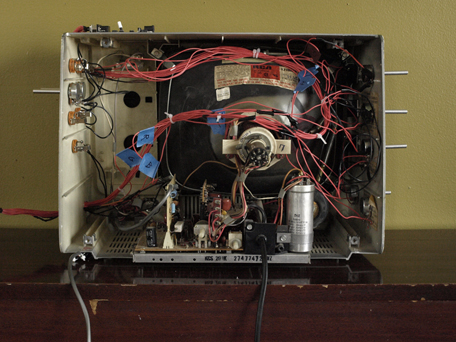
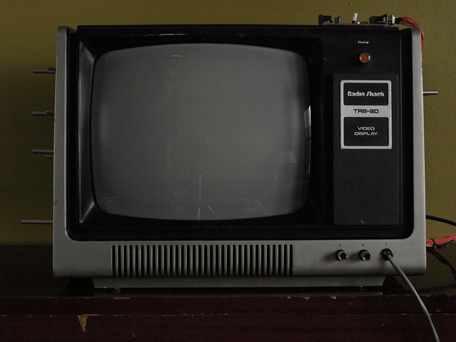
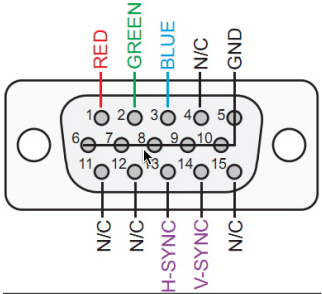
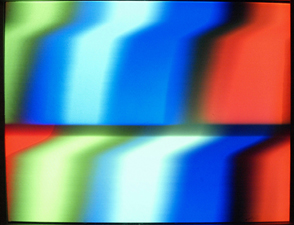
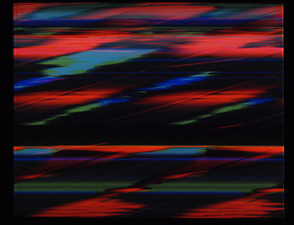
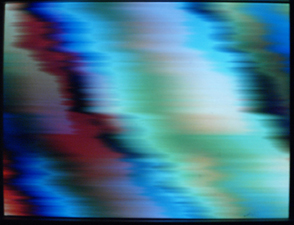
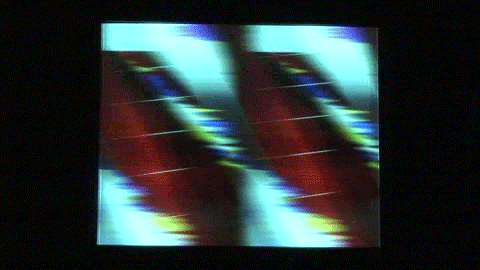
TUTORIAL: Hacking a VGA cable to bend audio into video
Cracked Ray Tube, 2010-ongoing
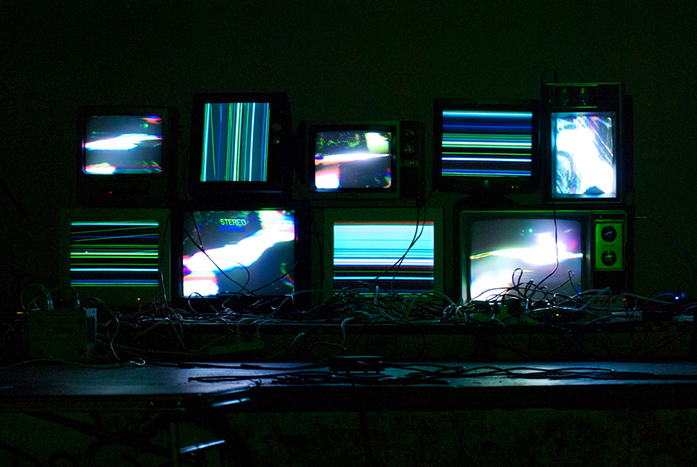
Cracked Ray Tube Studio Experiments, 2012
RGB.VGA.VOLT, 2014-
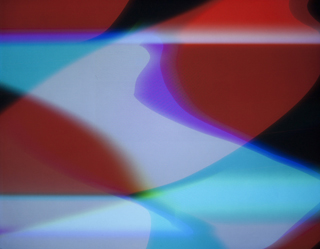
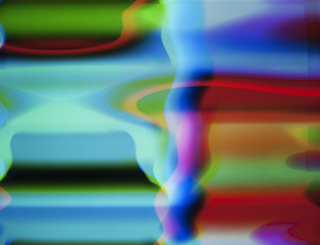
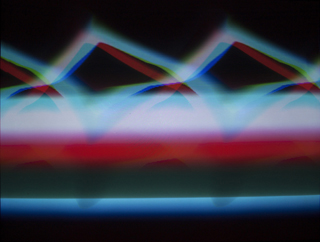
RGB.VGA.VOLT is an audio/video synthesizer that enables realtime exploration of the rich materiality concealed beneath the consumer interfaces of cathode ray tube computer monitors.
DIGITAL
In my digital glitch work of the past I pushed the use p-frames liberated from the image content of of i-frames to the extreme, creating extreme pixel-bleeds juxtposed with audio to generate synaesthetic experiences.
Examples:
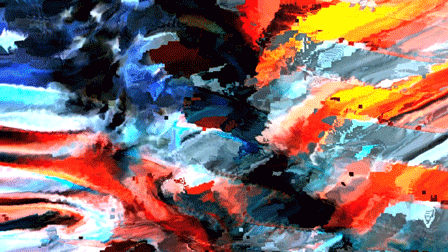
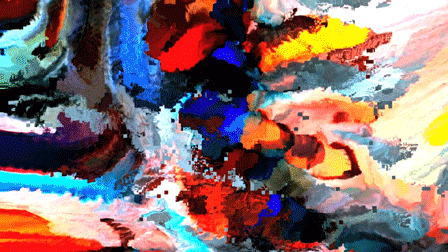
Universal Codec Error Aborting Video, 2010
LINKS AND FURTHER READING
Online Glitch Communities
Facebook:
G L I T C H
Glitch Artists Collective
glitChicago
The Material Glitch
Flickr:
http://www.flickr.com/groups/glitches
http://www.flickr.com/groups/databending
tumblr
Glitch Artists Collective
Glitch Theory
Vimeo
Selected Online Texts
"Digital Dualism And The Glitch Feminism Manifesto" by Legacy Russell
(with contributions by Tom McCormack, Curt Cloninger, jon.satrom, Nick Briz, Rosa Menkman, Iman Moradi, Hannah Piper Burns, Evan Meaney, Channel TWo, jonCates, Matthew Fuller, Alexander Galloway, A Bill Miller, and Laimonas Zakas)
"The Glitch Moment(um)" by Rosa Menkman
"Glitch Studies Manifesto" by Rosa Menkman
"A Vernacular of File Formats" by Rosa Menkman
glitChicago Exhibition Catalog
With contributions by Paul Hertz and Curt Cloninger
Active Glitch Artists:
Note: this list contains artists who currently work or have in the past worked within or in close proximity to the glitch realm. There are definitely omissions—let me know if you spot any, jconno@saic.edu.
Sophía Aguiar
Anthony Antonellis
Arcanebolt
Armpitrubber (Christine Janokowicz)
Cory Arcangel
Kim Asendorf
Ben Baker-Smith
Melissa Baron
Andrew Benson
Jason Bernagozzi
Marta Blicharz
Botborg
Nick Briz
Kevin Carey
Jon Cates
Jennifer Chan
Joseph Chiocchi (YOLK)
Nicolas Collins
Curt Cloninger
Arcangel Constantini
Petra Cortright
Cracked Ray Tube
Carrie Gates
Theodore Darst
Philip David-Stearns
Ted Davis
Kyle Evans
Ben Gaulon (Recyclism)
Glitchr
Sam Goldstein
Paul Hertz
Morgan Higby-Flowers
Shawné Michaelain Holloway
JODI
Nick Kegeyan
Karl Klomp
Lovid
Evan Meaney
Rosa Menkman
Paula Nacif
A Bill Miller
PIXEL NOIZZ
Notendo (Jeff Donaldson)
Monica Panzarino
Kate Parsons
PoxParty
Sabrina Ratté
Sarah Rooney
Legacy Russell
Alfredo Salazar-Caro
Jon Satrom
Satromizer OS
Yoshi Sodeoka
Eric Souther
Lisa Slodki
Stallio (Benjamin Berg)
Antonio Roberts
Daniel Temkin
Channel Two (Jessica Westbrook and Adam Trowbridge)
Vade (Anton Marini)
Vaudeo Signal
May Waver
GLITCH TUTORIALS
WEB TUTORIALS
"Bending a Penguin" (glitching vector files) by Antonio Roberts
"Databending and glitch art primer, part 1: the wordpad effect
"Databending and glitch art primer, part 2: sonification" by Stallio
"Databending and glitch art primer part 3: the GIF
"Databending Using Audacity" By Antonio Roberts
"Databending Using Audacity Effects" by Jamie Boulton
"Hacking a VGA cable to bend audio into video," my own tutorial on visualizing audio waveforms
VIDEO TUTORIALS
HOW TO DATAMOSH, by Bob Weisz/Datamosher
Part 1
Part 2
Part 3
GLITCHING WITH A HEX EDITOR (via Evan Meaney)
GLITCH CODEC TUTORIAL (via Nick Briz)
Nick Briz Glitch Codec TutorialPart 1
Nick Briz Glitch Codec TutorialPart 2
Nick Briz Glitch Codec TutorialPart 3
Nick Briz Glitch Codec TutorialPart 4
Nick Briz Glitch Codec TutorialPart 5
Part 6